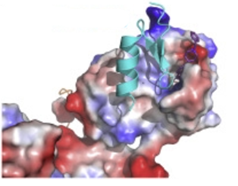Cancer immunotherapies work by triggering the body’s immune response against tumors. Tumor cells can evade destruction by the immune system, however, by attracting helper T cells, the “peacekeepers” of the immune system. Unlike cytotoxic T cells, which attack and kill pathogens, helper T cells suppress the immune response, essentially telling killer immune cells to “stand down.” While helper T cell function is vital for preventing autoimmune flare-ups, cancer cells can exploit this function, luring the immune system into a false sense of calm when there is in fact a threat.

Prior research has revealed that a protein called Helios plays a critical role in helper T cell function, and that low levels of Helios correspond with reduced tumor growth in mice. Now, former Damon Runyon-Rachleff Innovator James E. Bradner, MD, and his colleagues at the Novartis Institutes for Biomedical Research have translated this knowledge into a new, first-in-class drug that may make cancer immunotherapies more effective.
The drug, known as NVP-DKY709, binds to Helios and escorts it to the cell’s protein degradation machinery, where it is broken down by enzymes. Crucially, in a feat of medicinal chemistry, Dr. Bradner and his team designed the drug to bind only to Helios and not other members of its protein family, which serve other important functions in the cell.
Having demonstrated NVP-DKY709’s ability to facilitate Helios degradation, thereby suppressing helper T cell function and enhancing the immune response against tumors, the team is moving to bring the drug to the clinic. In 2019, they launched a phase 1 clinical trial to test NVP-DKY709 alone and in combination with another immunotherapy drug in patients with solid tumors. They aim to complete the study by next year.
“All fingers crossed for anti-cancer activity of this program in patients with advanced cancer,” Dr. Bradner recently tweeted.
This research was published in Cell.







